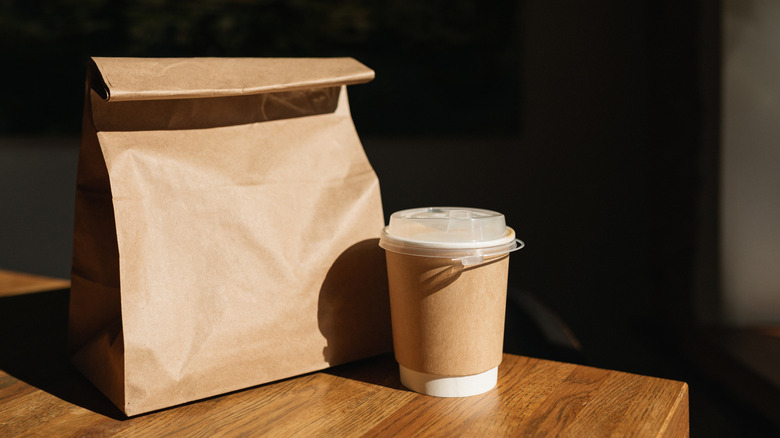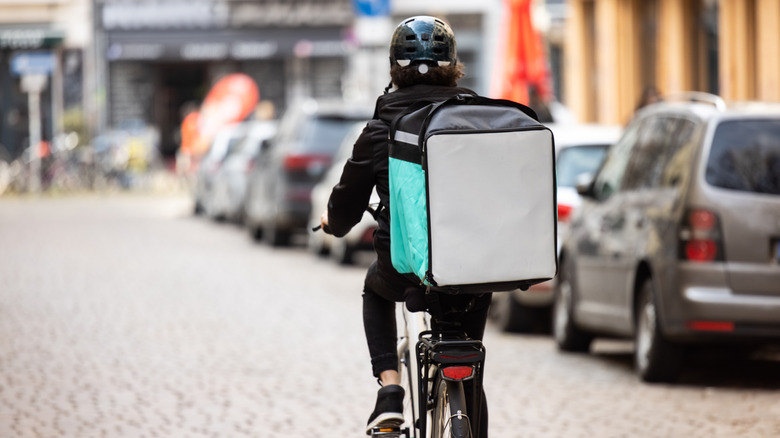Do Food Delivery Services Upcharge You When Ordering Pickup?
Thanks to ongoing elevated prices for everything from rent to groceries, you might find yourself on a tighter budget than you were hoping for. To make matters even worse, inflation has been slowly creeping back up, reaching 2.9% in December 2024 according to the Bureau of Labor Statistics. This increase even prompted the Federal Reserve (or, rather, this specific Fed committee) to reconsider another drop in the federal interest rate, instead holding steady at the current federal rate between 4.25% and 4.5%. It's also worth noting that Fed chair Jerome Powell emphasized that the Fed was in no hurry to continue bringing the rate down — meaning it could be a long time before interest rates hit a financially affordable level for many Americans.
Another concerning element to consider when it comes to both inflation and the Fed's likelihood of reducing the federal interest rates hinges on many of President Trump's proposed economic policies (and how these policies will inevitably hurt consumers). All of this is to say, chances are good prices will remain high, and even possibly go higher, across many different consumer categories in 2025. That might leave you, as a consumer, wondering how, what, and even where you can help shave your budget. Among the more obvious consumer spending categories that you might be looking to cut back on is food. More specifically, any food delivery services that you might use. According to a 2023 survey from Upgraded Points, Americans spent an average of $1,566 annually on food delivery.
Understanding delivery services
If giving up food delivery altogether feels like too much, you might investigate ways to still enjoy while cutting back on costs. A big way that consumers might reduce their expenses is to focus on carrying out their food orders as opposed to using delivery options. This has a double bonus of both eliminating the delivery fees that are generally added to orders (which can add up to a lot) and also eliminating the need to tip a delivery driver. As a consumer, you might even find it easier to simply continue using your same delivery service app (we looked into whether a service like Uber One is actually worth it) when ordering takeout from your favorite restaurant. While these apps offer the option of picking up rather than getting delivery there is something important to realize about how the pricing works within your favorite apps.
While your specific delivery service has no control over the listed menu items from your favorite restaurant, the fees levied on participating restaurants could still be influencing the price you see listed. In fact, according to Up Menu these restaurant service fees can range from 15% up to 30% of an order total. This means that participating restaurants either have to eat that cost or pass it on to the consumer by increasing the listed price on their menu items in order to offset the fees. This is why it can be more economical to order carry-out directly from a restaurant, and skip the delivery app altogether.
Other ways to save money
It can be difficult to figure out ways to save money that don't sacrifice your quality of life, so ensuring you have a clear priorities can be a great place to start when budgeting. If ordering delivery (or take out) is something you don't want to completely remove, then setting limits on the behavior can help manage the expense. For instance, only allowing yourself to order food a set number of times per month, or even setting a limit on the order total you're willing to pay for each order can help you maintain the little treat of ordering food while still managing your expenses in a healthier way. It's also important to recognize that, if keeping food delivery is a priority, that means you will probably have to cut from another expense category lower down on your priority list in order to make up the difference.
It's also worth mentioning the many ways you can save money on other food expenses every month. A good example is to identify just how much money you might be losing to food waste when you end up throwing out old groceries you didn't get around to eating. Similarly, shopping smarter at the grocery store (like, for instance, not making this produce department mistake while at the store) can also help you keep your grocery budget in check. While budgeting is no one's favorite activity, it can be a significant way to ensure you get to enjoy the small joys in life without risking significant financial consequences.


